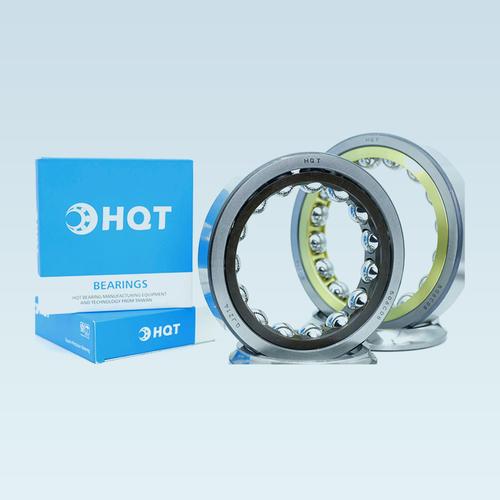Comprehensive Bearing Selection Guide: Key Factors, Types, and Best Practices
Selecting the right bearing is critical for optimizing machinery performance and longevity. This guide explores key factors like load types, rotational speed, environmental conditions, and maintenance requirements to help engineers and procurement professionals make informed decisions.
Table of Contents
1. Types of Bearings2. Load Capacity Calculation
3. Bearing Material Selection
4. Bearing Lubrication Guide
5. How to Choose the Right Bearing
1. Types of Bearings

Bearings come in various designs to address specific operational needs. Ball bearings excel in high-speed applications with moderate radial loads, while roller bearings handle heavier axial/radial combinations. Needle bearings provide space-saving solutions for compact assemblies, and spherical bearings compensate for shaft misalignment. Thrust bearings specialize in managing axial loads in gearboxes and turbines. Understanding each type's load distribution patterns, speed limitations, and installation requirements ensures proper application across industries like automotive, aerospace, and manufacturing.
2. Load Capacity Calculation
Accurate load analysis forms the foundation of bearing selection. Engineers must calculate both static and dynamic loads while considering shock loads and vibration factors. The basic rating life formula (L10) helps predict bearing lifespan under specific operating conditions. Proper accounting for axial vs. radial load ratios prevents premature failure. Advanced calculation methods incorporate temperature effects and lubrication efficiency. Real-world examples demonstrate how miscalculations lead to costly downtime, emphasizing the need for precise load mapping in industrial applications.
3. Bearing Material Selection
Material choice directly impacts bearing performance and durability. Chrome steel remains popular for general applications, while stainless steel resists corrosion in marine environments. Ceramic hybrids reduce friction in high-speed machinery, and polymer bearings operate without lubrication in food-grade settings. Emerging materials like silicon nitride and advanced coatings (DLC, PTFE) address extreme temperature and vacuum applications. This section compares hardness ratings, thermal expansion coefficients, and fatigue resistance across materials, providing a decision matrix for different operational challenges.
4. Bearing Lubrication Guide
Proper lubrication extends bearing life by reducing friction and dissipating heat. The guide compares grease vs. oil lubrication systems, detailing viscosity selection, relubrication intervals, and contamination prevention. Specialized lubricants for high-temperature or chemically aggressive environments receive particular attention. Case studies demonstrate how improper lubrication causes up to 80% of premature bearing failures. Practical maintenance tips include automated lubrication systems and condition monitoring techniques to optimize lubricant performance.
5. How to Choose the Right Bearing
This systematic approach combines technical parameters with practical considerations. Start by defining load characteristics, then match bearing type and material to operational demands. Consider installation space constraints, maintenance accessibility, and total cost of ownership. Compare ISO/DIN standards compliance and manufacturer certifications. The section includes decision trees for common industrial scenarios and explains how digital selection tools from leading manufacturers streamline the specification process while ensuring compatibility with existing machinery.
From precision medical devices to massive wind turbines, bearing selection directly impacts equipment reliability. This guide has covered essential aspects including material science, load dynamics, and lubrication strategies. By applying these principles, engineers can significantly reduce maintenance costs and prevent unexpected failures. Remember that proper bearing selection isn't just about specifications – it's about understanding your machinery's complete operational ecosystem.
Mastering bearing selection requires balancing technical knowledge with practical experience. Whether you're optimizing existing systems or designing new equipment, the principles outlined in this guide – from material compatibility to advanced lubrication techniques – provide a robust framework for decision-making. Implement these strategies to enhance equipment performance, reduce energy consumption, and achieve long-term operational efficiency in competitive industrial markets.




 13869596835
13869596835